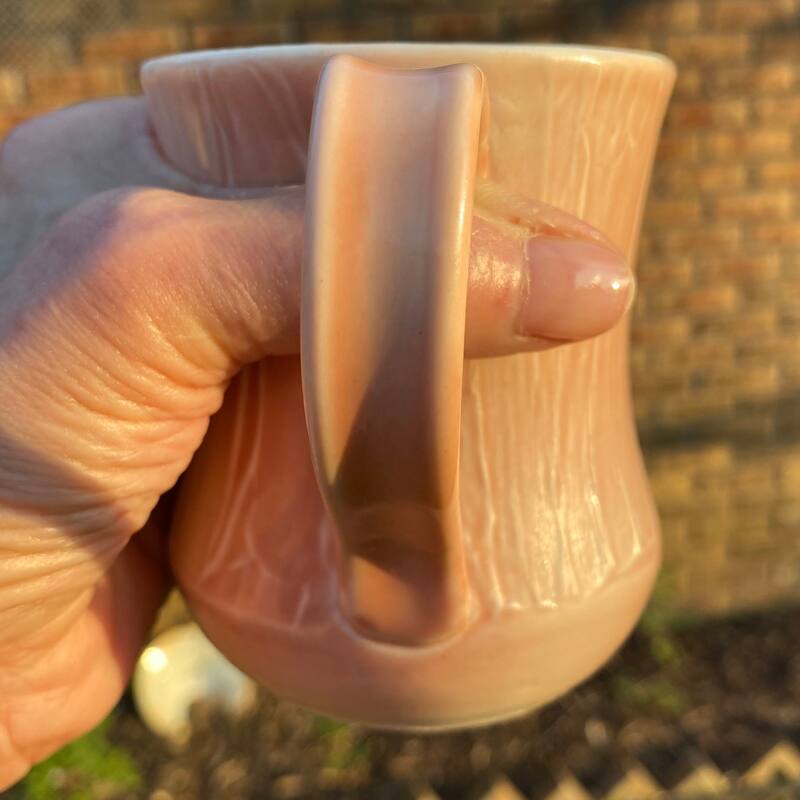|
What does it mean when functional pottery is microwave or dishwasher-safe? This is a question often asked by my students, but also one that my art supporters should know the answer to. Potters want to know how they can make their pottery microwave or dishwasher-safe. Many of these questions are answered in one of my porcelain classes; either online or hands-on, so this is just a summary of what to know. There is a combination of ways to make functional cups, plates, and dishes safe to use and eat from. Everything boils down to a combination of the raw materials in your clay and glazes and the way your work is fired. Potters do not always understand that temperature is a small part of the whole firing process. They should know and understand their raw materials and understand the firing process is also about heat work among other things. Pottery that is not fired to vitrification, will be porous enough to allow water to seep into the fired clay, even when it does not look like it has water in the walls. Liquid in the clay walls: Clay is not totally vitrified - it seldom is; very well composed and fired porcelain has as much as .5 % porousness, which leaves the possibility for it to soak water up from food and in the dishwasher. When the clay and glaze do not fit each other well the clay did not shrink enough to fit the glaze, it will craze and leave open areas for water to seep into the still non-porous clay. **Note**The other way round is even more unsatisfactory. When the clay shrinks more than the glaze, the glaze will “shell away” , a glaze fault that is know as shiffering. Very sharp and thin glaze ( glass) shells away from the clay. If swallowed, this can be dangerous. When liquid seeps into the clay walls during normal usage, cleaning in the sink or dishwasher and the object is then used in the microwave, the liquid in the walls will heat up and the steam that results from that, burn the users' hand during removal from the microwave. Remember: Overheating of the food content from microwave conduction is possible. In such cases the user cannot blame the potter for the heat. Clay is a very good transmitter of heat and it will radiate into the clay walls. When food is too long in the microwave, the heat physically transmits into the clay walls, however this is not a pottery flaw. The way to know which is the culprit and which not, is by touching the handle of the object in the microwave. The handle of well fired porcelain will stay cool, while the content in the cup will be heated. If the handle is hot, the object is not microwave or dishwasher safe. Test a bowl without handles, by testing the heat of the food and compare it with the rim or foot of the pottery bowl. Unless the food is overheated, the rim and foot rim will be cool to the touch. A high iron or other metallic content in pottery can also cause pottery to become hot in the microwave. Therefor it is better to work with glazes that are less saturated with metals like copper, ( which can become poisonous when it leaks from the glaze) iron and manganese. Containers can cool too quickly. The contrary of having a fully vitrified functional pottery is that it may not retain the heat of its content as it cool down faster than a non vitrified object. The beauty is that you can reheat it and feel ensured that your cup does not soak up liquid and become dysfunctional. There is however a very good and important counter to prevent your food or tea to get cold too fast. The correct design of a functional mug, cup, plate or bowl object is important, especially porcelain. Wide open objects will allow the content to be exposed to cool air and it will naturally cool down faster. Bowls and cups without foot rims will be exposed to the cold table surface. Remember clay and especially porcelain, transmits heat. Therefore the obvious answer is to design cups and bowls and even plates that are more enclosed to help retain the heat. Foot rims will elevate the food content away from the cool table surface and keep it warmer longer. Homemakers often wants to reject foot rims, because it may collect water in the enclosed foot rim when washed upside down in the dishwasher, but even for that there is a solution: cut openings in the foot rim to ensure the water to flow out and not gather in the foot rim area. There are artists that create double walls and even lids for mugs. Personally I do not want to go that route, simply because I am pursuing an artist route with my work, however, it is a solution for those that would want to find a commercial niche. Personally, I like my functional ware to be translucent and light. Any time I have a heavy mug or bowl in my hand, I feel that I have to concentrate more not to drop it. There are more technical factors to consider, but for now I want for our consumers to make informed decisions when buying dinnerware or functional pottery and I want to prompt you to tell me what you think. Go to Dinnerware for more information about my functional porcelain.
1 Comment
5/21/2024 09:08:38 am
But it is not just about the food, it's about the experience. Our friendly staff are dedicated to providing you with good services ensuring that every visit leaves you satisfied.
Reply
Leave a Reply. |
Blog
Categories
All
|





 RSS Feed
RSS Feed